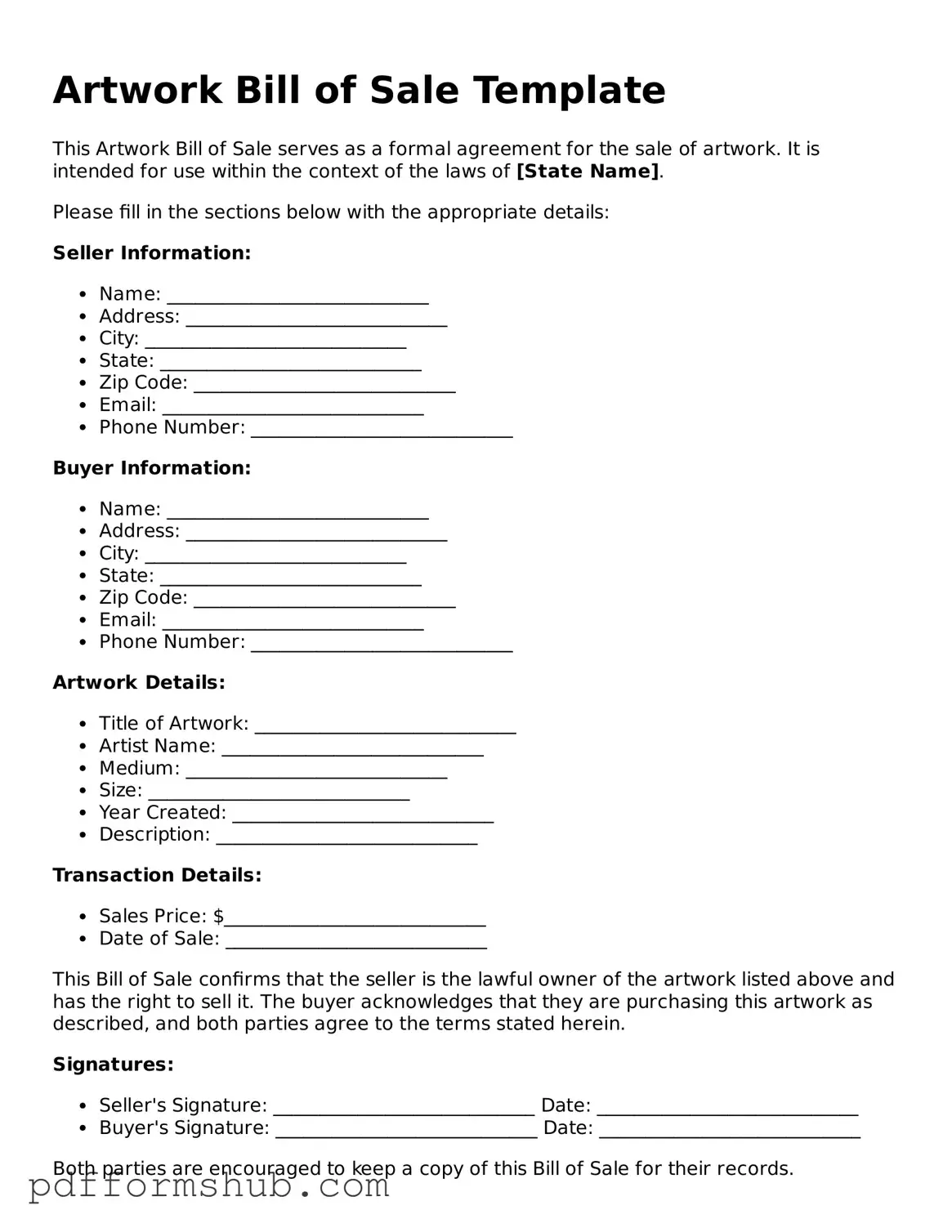The Artwork Bill of Sale form serves as an essential document in the process of buying and selling artwork, providing both parties with a clear record of the transaction. This form typically includes vital information such as the names and contact details of the buyer and seller, a detailed description of the artwork being sold, and the agreed-upon purchase price. Additionally, it may outline any specific terms or conditions related to the sale, such as the transfer of ownership rights and any warranties regarding the authenticity of the piece. By documenting these key elements, the Artwork Bill of Sale helps to protect the interests of both the buyer and the seller, ensuring that the transaction is transparent and legally sound. Furthermore, this form can also serve as a useful tool for future reference, particularly for collectors and artists who wish to maintain a comprehensive record of their transactions. Understanding the components of this form is crucial for anyone involved in the art market, as it facilitates trust and clarity in the often complex world of art sales.
